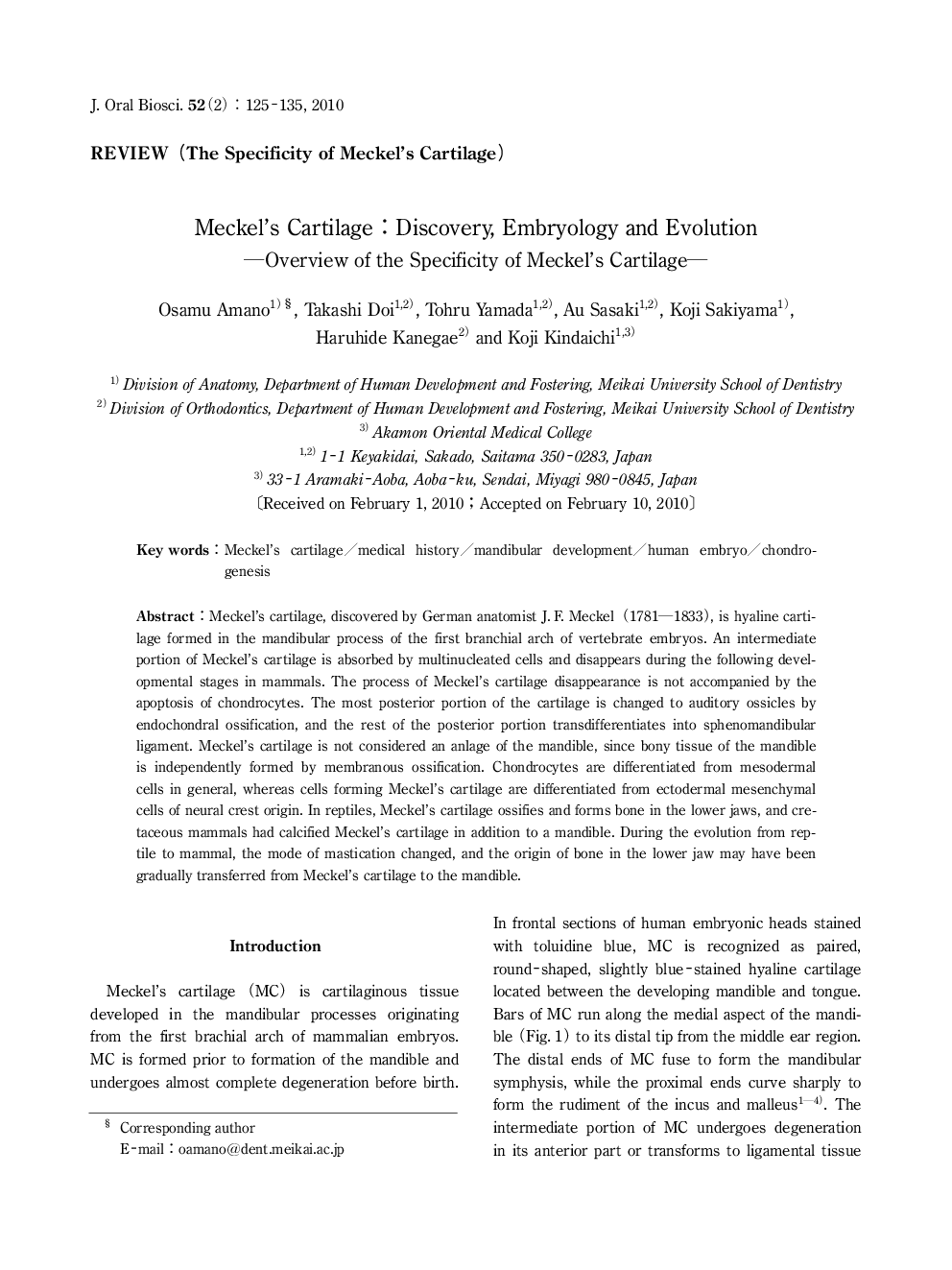| Article ID | Journal | Published Year | Pages | File Type |
|---|---|---|---|---|
| 2776976 | Journal of Oral Biosciences | 2010 | 11 Pages |
Meckel's cartilage, discovered by German anatomist J. F. Meckel (1781–1833), is hyaline cartilage formed in the mandibular process of the first branchial arch of vertebrate embryos. An intermediate portion of Meckel's cartilage is absorbed by multinucleated cells and disappears during the following developmental stages in mammals. The process of Meckel's cartilage disappearance is not accompanied by the apoptosis of chondrocytes. The most posterior portion of the cartilage is changed to auditory ossicles by endochondral ossification, and the rest of the posterior portion transdifferentiates into sphenomandibular ligament. Meckel's cartilage is not considered an anlage of the mandible, since bony tissue of the mandible is independently formed by membranous ossification. Chondrocytes are differentiated from mesodermal cells in general, whereas cells forming Meckel's cartilage are differentiated from ectodermal mesenchymal cells of neural crest origin. In reptiles, Meckel's cartilage ossifies and forms bone in the lower jaws, and cretaceous mammals had calcified Meckel's cartilage in addition to a mandible. During the evolution from reptile to mammal, the mode of mastication changed, and the origin of bone in the lower jaw may have been gradually transferred from Meckel's cartilage to the mandible.
